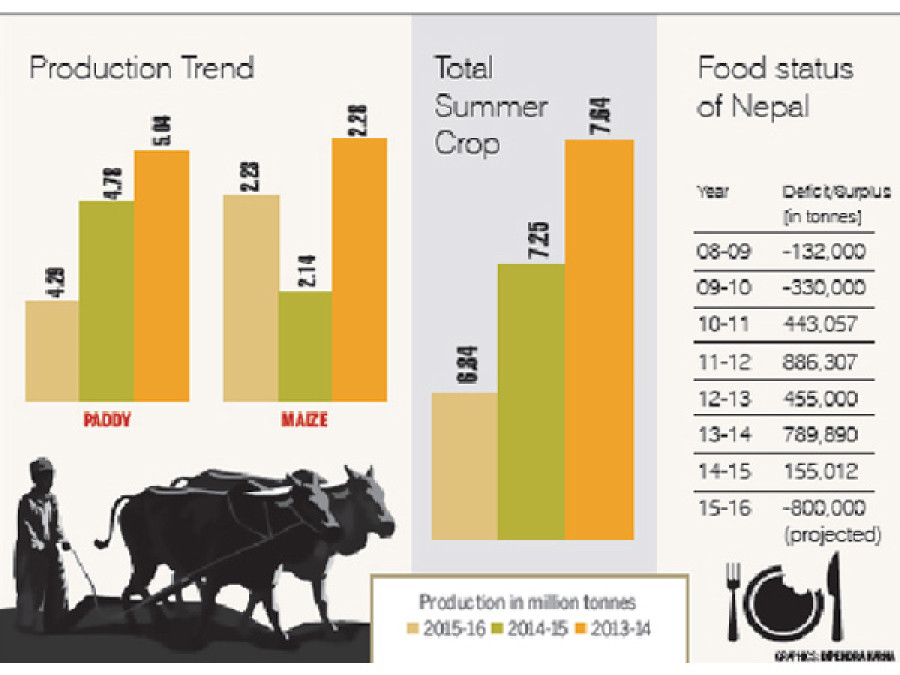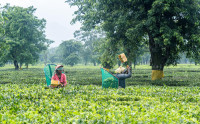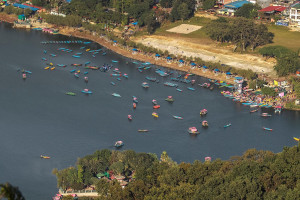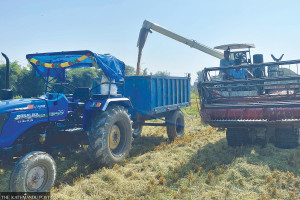Money
Paddy output projected to fall 10pc
Nepal’s paddy output has been projected to fall sharply by 10.22 percent to 4.29 million tonnes this fiscal year, swelling the food deficit, widening imports and putting pressure on market prices.
Nepal’s paddy output has been projected to fall sharply by 10.22 percent to 4.29 million tonnes this fiscal year, swelling the food deficit, widening imports and putting pressure on market prices.
Government officials said that the drop in paddy production could affect the country’s GDP by 0.5 percent this fiscal year.
A preliminary production report of summer food grains—paddy, maize, buckwheat and millet—unveiled by the Ministry of Agricultural Development on Wednesday showed that the country produced 489,534 tonnes less paddy this year.
This is the second consecutive year that the country’s paddy production has dropped. In the last fiscal year, output was down 5 percent.
The sharp fall in production has been attributed to a poor monsoon rainfall, shortage of chemical fertilizers and crop failure in a number of Tarai districts.
“Due to a late and poor monsoon and drought, 62,438 hectares or 4.38 percent of the 1.42 million hectares of paddy fields were left uncultivated,” said Hem Raj Regmi, chief statistician at the ministry.
According to the monsoon report based on information gathered by the Department of Hydrology and Meteorology from 21 different centres in the country, the average rainfall from June 10 to August 15 this year was 74.2 percent of the average rainfall of the past 30 years. “Some central Tarai districts suffered severe drought during the paddy transplantation period,” said Regmi, adding that a week-long heavy rainfall in late September had brought some relief.
After encountering drought and erratic rain throughout the June-August transplantation period, farmers had to suffer a shortage of chemical fertilizers. “The government was unable to supply the vital farm input despite having adequate stocks because of the unrest in the Tarai and Indian embargo,” said Suroj Pokhrel, joint-secretary of the ministry. “As a result, the distribution of chemical fertilizers to farmers plunged 40 percent this year.”
The late paddy transplantation had resulted in crop failure on 1 percent of the total available paddy field. As a result of various negative factors, paddy productivity dropped 6.11 percent to 3,154 tonnes per hectare.
Despite the April 25 earthquake which hit the hill districts hard, maize and buckwheat production has been expected to grow 4 percent and 7.1 percent to 2.23 million tonnes and 11,640 tonnes respectively. Millet production has been expected to drop 2 percent to 302,397 tonnes.
Looming food deficit
Nepal could slide back to food deficit status this fiscal year after becoming a food surplus country in fiscal 2010-11. According to Pokhrel, the country could face a deficit of 800,000 tonnes due to reduced paddy production.
“However, the food scenario could become positive if the output of the chief winter crop—wheat—jumps significantly. Even if the wheat output remains at last year’s level of 1.97 million tonnes, the country would be food deficit by 100,000 tonnes.” Pokhrel said that they had written to the Ministry of Commerce and Supply to keep a reserve of 400,000 tonnes of food this year as a deficit looms large.
In the last 12 years, Nepal has maintained a food surplus position for eight years and a deficit position for four years. According to the Agriculture Ministry, the country had the highest food deficit in 1994-95 of 485,000 tonnes. In the fiscal years 2009-10 and 2008-09, the food deficit reached 330,000 tonnes and 132,000 tonnes respectively.
However, in 2010-11, the government had projected higher food reserves as the census had shown the population to be lower than estimated. As a result, Nepal’s food reserves increased to 443,057 tonnes.
In 2011-12, food reserves jumped to 886,307 tonnes due to a bumper harvest. In 2012-13, 2013-14 and 2014-15, Nepal
had surplus food reserves of 455,000 tonnes, 789,890 tonnes and 155,012 tonnes respectively.
The ministry said that the weather forecast for the cultivation of the winter crop had been good so far. However, the Tarai unrest that has prevented distribution of chemical fertilizers for the winter crops has caused worry to the government.
Normally, the planting of the winter crop starts between mid-November and mid-December. “If we fail to distribute seeds and fertilizers in time, it could affect the winter crop as well,” he said, adding that 120,000 tonnes of fertilizers lay stranded at Nepal-India border points.
He said that the winter crop needed 90,000 tonnes of chemical fertilizer and so far 30,000 tonnes had been distributed. “If there are no obstacles at the border and in the Tarai, we can distribute fertilizers to the farmers in time.”
Import scenario
Nepal imported agro products worth Rs137.12 billion in the last fiscal year 2014-15, setting off concern that the agrarian country’s dependence on imported farm products was ballooning out of control.
Of the total imports, cereals amounted to Rs35.12 billion in the last fiscal year. Out of the total shipments, rice and paddy amounted to Rs14.78 billion (338,512 tonnes) and Rs9.01 billion (345,618 tonnes) respectively.
Maize imports amounted to 290,993 tonnes worth Rs7.43 billion.
The sharp fall in production is expected to increase the cereal import bill this year. Experts said that imports of cereal could rise to Rs45 billion in this fiscal year due to sustained demand and lower production. Nepal has been importing food since 2005.




 23.12°C Kathmandu
23.12°C Kathmandu














